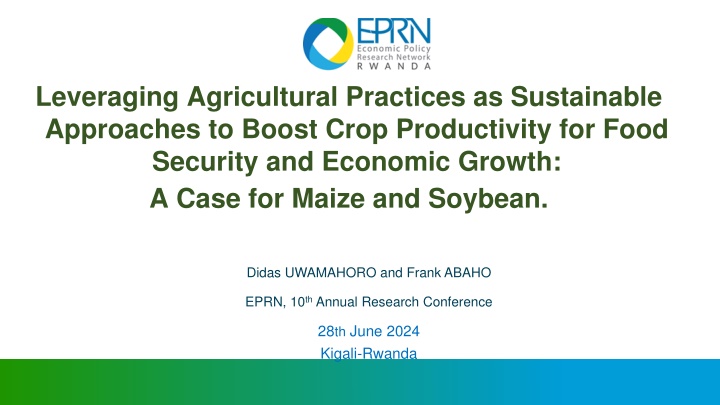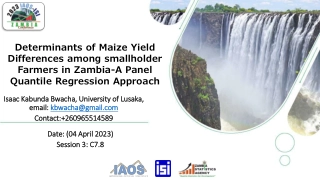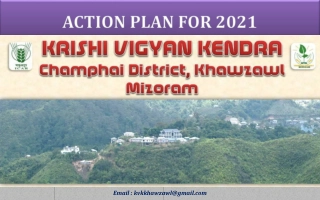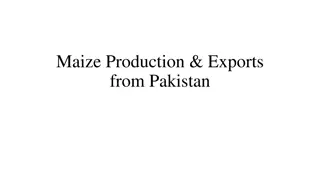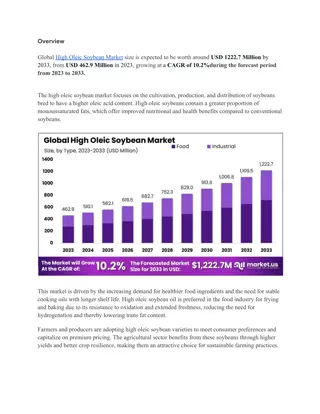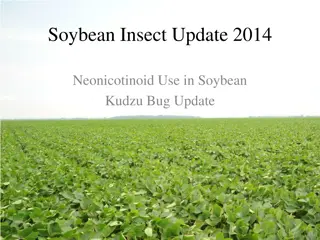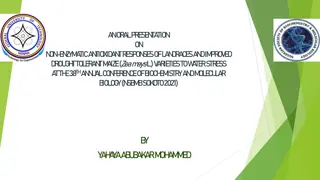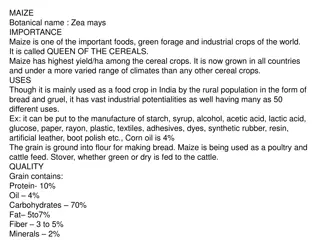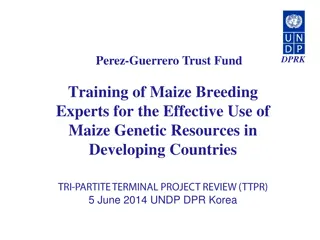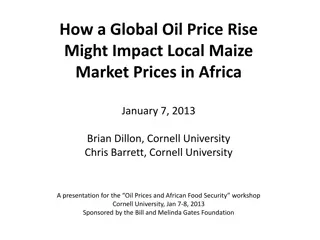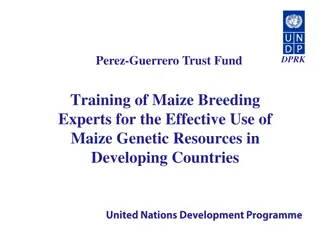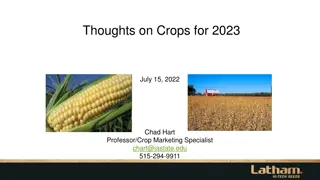Boosting Maize and Soybean Productivity for Sustainable Growth
This research explores strategies to enhance crop productivity for maize and soybean in Rwanda, focusing on agricultural practices to achieve food security and economic development. It addresses challenges and proposes solutions to improve yield. The findings discuss current productivity levels, constraints, and opportunities for enhancing agricultural practices.
Download Presentation

Please find below an Image/Link to download the presentation.
The content on the website is provided AS IS for your information and personal use only. It may not be sold, licensed, or shared on other websites without obtaining consent from the author.If you encounter any issues during the download, it is possible that the publisher has removed the file from their server.
You are allowed to download the files provided on this website for personal or commercial use, subject to the condition that they are used lawfully. All files are the property of their respective owners.
The content on the website is provided AS IS for your information and personal use only. It may not be sold, licensed, or shared on other websites without obtaining consent from the author.
E N D
Presentation Transcript
Leveraging Agricultural Practices as Sustainable Approaches to Boost Crop Productivity for Food Security and Economic Growth: A Case for Maize and Soybean. Didas UWAMAHORO and Frank ABAHO EPRN, 10thAnnual Research Conference 28th June 2024 Kigali-Rwanda
Contents Introduction 1 Issue 2 Paper Objective 3 Findings and Discussions 4 Conclusion and Recommendations 5 2 Ministry of Trade and Industry 2013 Economic Policy Research Network www.eprnrwanda.org
1. Introduction Agriculture contributes 25 percent of the GDP (NISR, 2023), and providing 53.4 percent of employment (RPHC, 2022). A recent census found that 56 percent of farming households grow maize (74% in the Eastern province), while 11 percent grow soybeans (21% in the Southern province). Maize and Soybean have about 10 percent of the total Gross Value Added (GVA) for the overall food crops grown in Rwanda thus highlighting its significant importance in the economy. 3 Ministry of Trade and Industry 2013 Economic Policy Research Network www.eprnrwanda.org
2. Issues 2.1 Productivity: Despite efforts, there is a huge underperformance of Maize and Soybean productivity, over the past 7 years, averaging around 1,600Kgs Per Ha for Maize (vs. potential of 7,000Kgs per Ha), and 400 Kgs per Ha for soybean (vs. potential of 2,500Kgs per Ha). 2.2 Food Security: High demand led to the importation of 139,000 MT of maize (30% of production) and 19,000 MT of soybeans (30% of production) in 2022. 2.3 The average farming size is 0.4 Ha (77% of the farmers have less than half a hectare), therefore, how can we expect improvement in Maize and soybean productivity without increasing cultivated area! 4 Ministry of Trade and Industry 2013 Economic Policy Research Network www.eprnrwanda.org
3. Paper Objectives Analyse the effects of agricultural practices on yield productivity, aiming to increase by 500Kgs per hectare, reaching at least 2,100Kgs per hectare by 2025. 3.1 Current and recommended practices. 3.2 Minimum best practices likelihood results. 3.3 Viability Model for investment opportunities. 5 Ministry of Trade and Industry 2013 Economic Policy Research Network www.eprnrwanda.org
4. Summary of Findings and Discussion Data: The paper uses SAS micro data from 2017-2023 (14 Seasons), represented at district level. 4.1. Current Yield: Though there has been an increase in maize production over the past 7 years (CAGR of 3% ), resulting mainly from expansion of cultivated area; the productivity has been overall stable (1.6T/Ha), whereas the PSTA4 targets 2.9 T/Ha; 4.2. Challenges: HighMixed cropping (89%), Low irrigation practices (2.3%), Moderate use of inorganic fertilizers (42%). 6 Ministry of Trade and Industry 2013 Economic Policy Research Network www.eprnrwanda.org
4. Summary of Findings and Discussion 4.3. Minimum Practices: Significant Drought/Rainfall issues, highly decreased productivity (around 80%). Use of organic fertilizers and the erosion control, are not statistically significant to the productivity, while interactions with practices and inputs, the two determinants are significant and makes other determinants more significant (1%). Pure cropping practices significantly increase the odds (1.5 folds productivity than mixed cropping) productivity for maize and about double for Soybean in the Season A. 7 Ministry of Trade and Industry 2013 Economic Policy Research Network www.eprnrwanda.org
4. Summary of Findings and Discussion 4.4. Opportunity: The profitability model which considers farmers efforts (about 130,000 FRW per month), the model shows that the Net Internal Rate of Return (IRR) is 1,100,000 FRW per hectare (Ha) for maize and 595,000 FRW per Ha for soybean. This provides valuable insights for potential investors and financial institutional lenders in strengthening agricultural investments. 8 Ministry of Trade and Industry 2013 Economic Policy Research Network www.eprnrwanda.org
5. Conclusion and Recommendations Based on the analysis, the paper validated that good agricultural practices certainly uplift the Maize and Soybean productivity for all categories, especially small holder farmers, hence contributing to reduction in Rwanda s agricultural import bill. 1 2 Enhance extension services to improve good agriculture practices. Collaboration efforts for stakeholders in the Maize and Soybean production value chains (such as: Irrigation infrastructure, physical and financial agricultural inputs). 3 9 Ministry of Trade and Industry 2013 Economic Policy Research Network www.eprnrwanda.org
Thank You Murakoze Mercie EPRN Tel: 0788357648 info@eprnrwanda.org www.eprnrwanda.org
